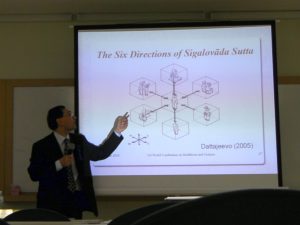Introduction
Building the right relationships with the right people applies to any context, offline and online. However, the ability to rapidly make connections on the Internet means we need to be more vigilant to ensure that we remain true to this recommendation. Apart from this, the nature of relationships remains fundamentally the same. We argue that a person is an integrated whole; whether engaged in the physical world or online, there is the one life, albeit played out in multiple facets.
We may pretend to be someone else (as promoted in VR worlds such as Second Life and the metaverse), but these only add layers of maya (illusion) and according to Buddhist teachings, karma accumulates around the same stream of consciousness; after the virtual deed is done, the effects will be experienced by the person, in their constituents (khandhas). The key requirement then is to understand what deeds bring happiness and unhappiness. Do we really need VR?
Given the acceleration driven by socialising online, the creation of amenable networking systems is a difficult challenge and cannot be solved by facile means. We may aim for art, but won’t reach that until we’ve worked hard to find workable, if not the most elegant, solutions. That’s a technical challenge, but we can all work on the problem of happiness. Surely, then, a sensible candidate should be able to reflect closely the nature of human relationships pre-Internet, comprising kinship and non-kinship relationships, which have distinct contextual meaning and grow organically.
Fortunately, there is an architectural model that strongly suggests an architectural framework, one that is based on the Buddha’s teachings to a householder, which I explore on the Sigala research site.
Timeline
To indicate how I’ve reached my present position, I offer a timeline of my involvement in initiatives that relate to this theme.
Tags
About.com, community, Facebook, friendship, interventions, MiningCo, RAMBLE, relationships, safety, Sigala, social media, social networks, sustainable development, web
This page was published on 10 May 2022 and last updated on August 10, 2022.



